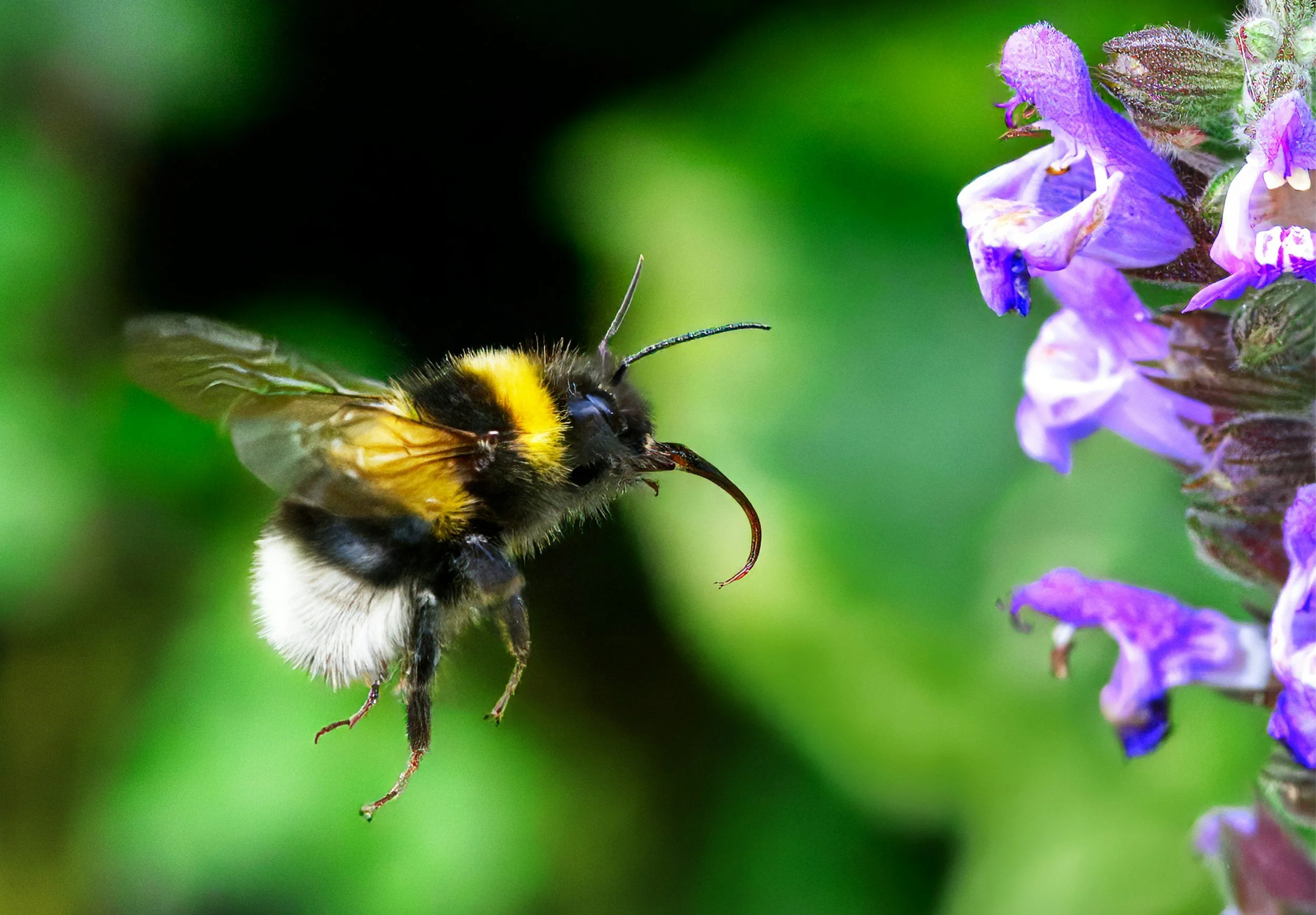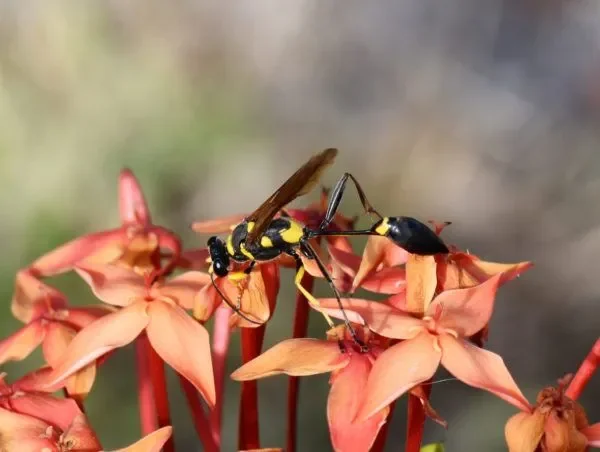A Guide for Types of Bees and Wasps
When summer rolls around, so do the buzzing, stinging insects. Bees, wasps, yellowjackets, and hornets all fall under the stinging insect category—and they can quickly become a problem during the warmer months. Not only are their stings painful, but these pests reproduce rapidly. For those with allergies, a single sting can turn a fun day into a serious emergency.
What many people don’t realize is just how many different types of bees and wasps exist. Each species has its own behavior, appearance, and nesting habits. Understanding the differences can help you identify what you’re dealing with—and how to handle it safely. Use our guide below to get familiar with the most common types of stinging insects you might encounter.
Bumblebee
Bumblebees
Bumblebees are beneficial pollinators and typically pose little threat to humans. They prefer to focus on flowers and plants, but if their nest feels threatened, they will defend it—sometimes aggressively. Bumblebees are capable of stinging multiple times, and their sting is particularly painful.
They are fuzzy with black and yellow stripes and range from 1/4 to 1 inch in size. Bumblebees may nest underground, around patios, or even inside soffits and attic spaces. To prevent an infestation, inspect for potential nesting areas and seal off openings where they could gain entry.
Carpenter Bee
Carpenter Bees
At first glance, carpenter bees resemble bumblebees, but you can tell them apart by their shiny, bare abdomens. Instead of building hives, carpenter bees bore into wood to create galleries where they lay eggs — often in older or untreated wood.
These bees are 1/2 to 1 inch in size. Males can be quite territorial and may hover near you, but they don’t sting. Females can sting, though they rarely do. Painting or staining exposed wood can help deter them. Watch for small round holes and sawdust — signs that carpenter bees are at work.
Honey Bee
🍯 Honey Bees
Honey bees are the classic image of a bee — and for good reason. These social insects produce honey and are vital pollinators. They’re smaller than bumblebees and carpenter bees, measuring around 1/2 to 5/8 inch, and have orangish-brown or black coloring.
Honey bees usually only sting in defense. Their colonies can contain tens of thousands of bees. If you spot a hive, avoid disturbing it. Professional removal is the safest option, especially if it’s near your home.
Bald-Faced Hornet
Bald-Faced Hornets
Despite the name, bald-faced hornets are actually a type of yellowjacket. They’re recognizable by their white faces and dark bodies. Their large, enclosed nests are gray and papery and are typically found hanging from trees, eaves, or sheds.
If you see a large nest or notice hornets flying around in groups, you likely have an infestation. They're attracted to strong smells and food, so keep trash covered and avoid scented products outdoors. Seal up gaps around your home to prevent them from entering.
European Hornet
🇪🇺 European Hornets
Larger than most wasps, European hornets measure 3/4 to 1-1/2 inches long and have brown bodies with yellow-striped abdomens. These hornets often nest in hollow trees, wall voids, attics, and porches.
Though they can sting, they’re surprisingly helpful in controlling other insect populations. However, if they build a nest near your home, it’s best to have them removed professionally due to their size and defensive nature.
mud dauber
Mud Daubers
Mud daubers are long, slender wasps, typically black with light markings. Unlike other wasps, they are solitary and non-aggressive. They build nests out of mud, often found under eaves, in garages, sheds, or along ceilings.
Mud daubers are beneficial because they help control spider populations. But if they’re nesting in or near your home, a pest professional can help remove them safely.
Paper Wasps
Paper wasps are known for their papery-looking nests, which are often attached to eaves, beams, and doorframes. They have yellow or reddish markings and are slightly smaller, measuring around 5/8 to 3/4 inch.
While generally not aggressive, they will sting if provoked or if their nest is disturbed. Like mud daubers, they also help control pests, but it’s still wise to manage any nests near entryways.
yellowjacket
Yellowjackets
Yellowjackets are compact and aggressive, with their signature black and yellow coloring. They measure 3/8 to 5/8 inch and build large paper nests — sometimes underground or suspended in bushes, trees, or buildings.
They’re extremely territorial and will sting repeatedly if they sense a threat. Just getting too close to a nest could result in a swarm. Removal should always be left to professionals.
Asian Giant Hornet
Asian Giant Hornets
Also known as “murder hornets,” Asian giant hornets are the largest of the group, measuring 1-1/2 to 2 inches. They were first reported in the U.S. in 2019. These hornets are known for attacking bee colonies and can sting multiple times.
They prefer wooded, low-lying areas and feed on other insects. If spotted, it’s critical to report the sighting to local authorities or a pest control expert.









